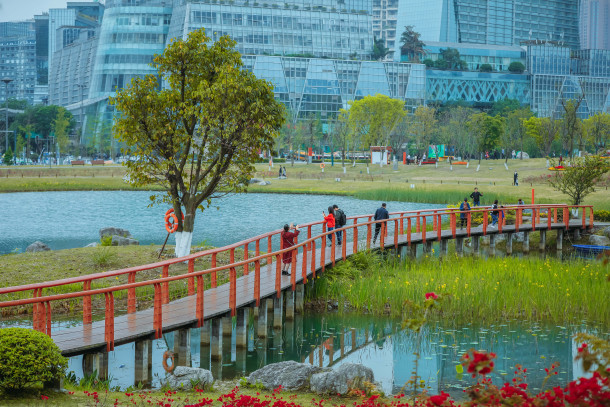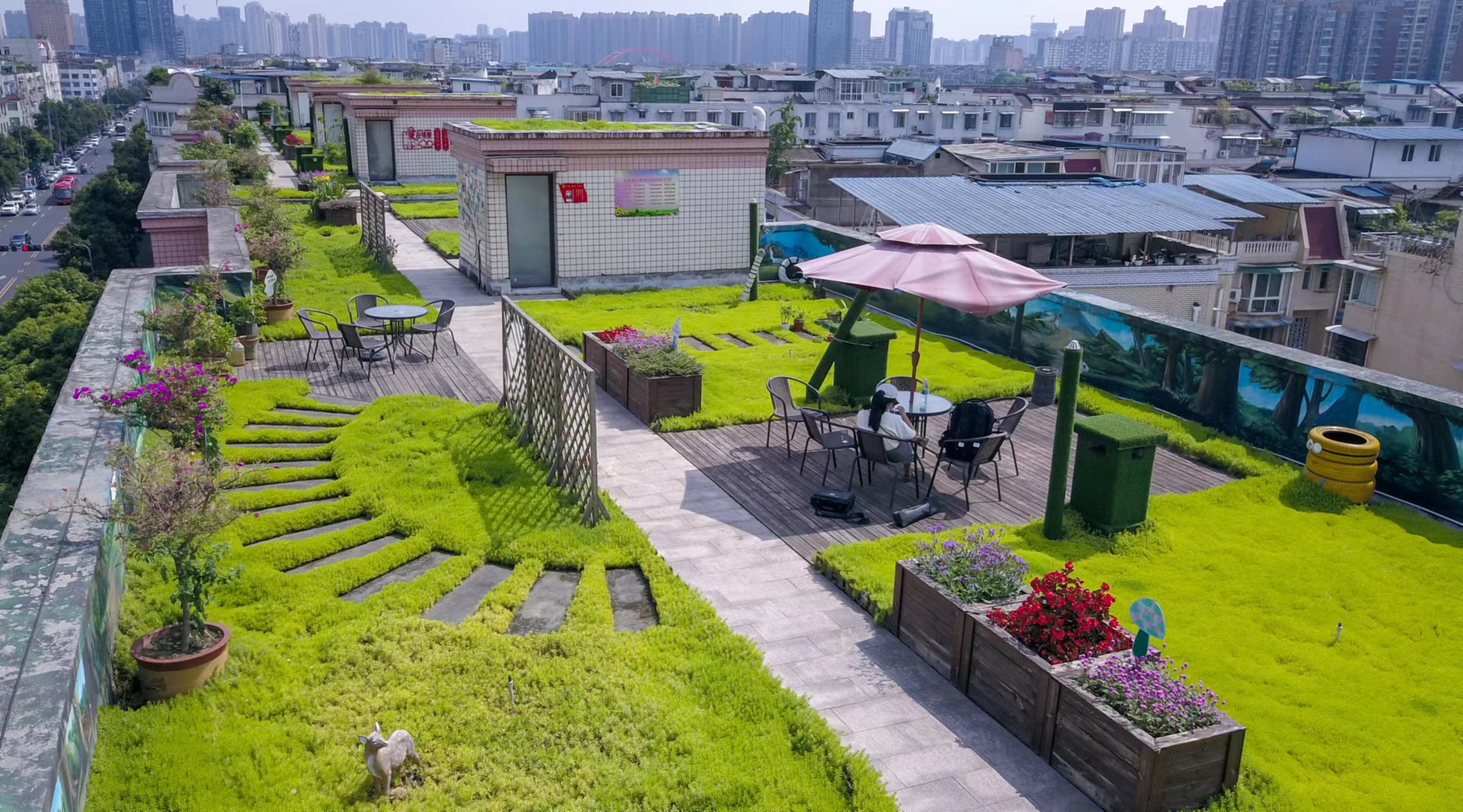
Saving the planet, one neighbourhood at a time
For city leaders looking to make an impact on climate change, scale is a big challenge.
One-off projects — retrofitting an old building for energy efficiency, for example — can be very achievable but may not move the needle much on a city’s greenhouse-gas emissions. On the other hand, tackling entire energy grids or transport networks at a citywide or metropolitan scale are complex to plan and execute.
That’s why a growing number of Metropolis member cities, from Barcelona to Chengdu to Bogotá to Toronto, are looking at the neighbourhood, district, or community level as a focus for their climate efforts. They think neighbourhoods might be the perfect scale — not too big and not too small — for cities to slash emissions to zero, or close to it
How to do that will be the topic of an upcoming Metropolis Learning Hub webinar on 3 November at 9.00 a.m. CET. The session will feature municipal leaders from Chengdu, China, which started building 10 near-net-zero communities in March, plans to start another 20 by the end of this year. In addition, the C40 Cities Climate Leadership Group will present experiences from other global cities, as well as key lessons from the organisation’s new guidebook for creating green and thriving neighbourhoods, developed with the design and engineering firm Arup.
Register for the webinar here.
There’s no single definition of “net zero” communities, but the general idea around the world is the same: to slash emissions from within certain neighbourhoods to a small amount that can be negated with the use of carbon offsets. The strategy is emerging as a critical component of many cities’ plans to become carbon-neutral by 2050, in line with the Paris Agreement’s goal of limiting global warming to 1.5°C.

Rooftop gardens in the Angong Community of Chengdu, China. Chengdu is advancing a bold plan to reduce
greenhouse-gasemissions to nearly zero within 30 communities by 2025. (Chengdu Municipality photo)
The idea comprises not one strategy but a broad range of approaches around buildings, energy systems, transport, parks, food production and more, all working together. The goal is to not only reduce emissions within a given neighbourhood but also make it a better place for people to live. This builds on the concept of the “15-minute city,” the urban planning principle that people should be able to shop, work, and handle most of life’s other needs within a 15-minute walk or bike ride of home.
These ideas have only gained currency during the pandemic, as public health measures at times have kept people close to home. “Especially with the COVID-19 situation, we’ve seen that the neighbourhood scale is very important to peoples’ lives,” says Jing Hou, Sectoral Policy Senior Manager for C40 Cities in China.
The C40 guidebook identifies three sources of emissions at the neighbourhood level that need to be minimised. First is “operational emissions” — that’s the source most people are familiar with, emanating from energy used in buildings and automobile tailpipes. Second is “embodied emissions” — that’s related to construction of buildings and infrastructure and the sustainability of materials used in them. Third, and the most difficult source to address locally, is “consumption-based emissions” — essentially, the emissions that come from food and other goods or services residents consume in their daily lives.
C40 recommends communities aim to achieve net-zero in both operational and embodied emissions, while taking ambitious action on consumption-based emissions.
The guidebook lays out ten neighbourhood-level approaches city leaders can use to reduce emissions and improve quality of life. These include developing compact communities where everyday needs are located within a short walk or bike ride; using low-carbon and locally produced materials in building construction; investing in green buildings, renewables and energy storage; strengthening supply chains to enable consumption and reuse of locally produced goods; creating parks, planting trees, and greening public spaces; encouraging circular use of resources and a sharing econonomy; and building strong physical and digital connectivity with other parts of the city and beyond.
Jing says neighbourhoods are the perfect test bed for trying these and other approaches. Compared with citywide initiatives, projects at this scale can be easier to finance, engage residents around, and create governance mechanisms for decision making. And neighbourhoods can be good laboratories for design and policy innovations. “This scale is very flexible and controllable for new pioneer integrated solutions,” she says.
Examples of these ideas in action are popping up around the world. In Barcelona, the city’s “Superblocks” programme limits auto traffic within certain neighbourhoods, gives priority to pedestrians and cyclists, and creates new public places for residents to gather. Similar interventions are underway in Bogotá, where Mayor Claudia López’s “Barrios Vitales” programme is redesigning streets for people and promoting flexible use of building spaces so that they can be easily adapted rather than torn down. In Toronto, a new waterfront district will feature certified green buildings made from recycled construction materials, as well as ample parks and trees, easy transit access, and infrastructure for bicycles and electric vehicles.
In China, C40 is working on Green and Thriving Neighbourhood pilot programmes in Chengdu, Shenzhen and Qingdao. The hope is to create new examples of best practices that can inspire similar efforts, both in and out of China, and inform future policies at the local and national levels. China has committed to seeing its carbon emissions nationally peak in 2030 and achieve carbon neutrality by 2060.
For city and metropolitan leaders, the deadlines are tight and there’s no time to waste. Existing urban neighbourhoods are in a constant state of renewal and transition, and choices made today around design and construction will be locked in for a generation. Meanwhile, new neighbourhood developments and wholesale redevelopments represent golden opportunities to start from scratch with the most cutting-edge technologies and integrated solutions. Still, careful upfront planning is critical. “You need to comprehensively consider all the emission categories and all the action approaches as early as possible,” Jing says. “If you miss anything at an early stage, then it’s hard and costly to compensate afterwards.”
Jing believes city leaders are up to the challenge. “Now is the time to accelerate action and increase common ambition,” she says. “When there are large amounts of these projects around the world, they can be the lighthouses of best practices that others can take reference from.”
Want to learn more about creating net-zero communities? Register for our webinar here.

